As you travel to Europe, you’ll find how different it can be, in climate and culture, so packing for such a trip can be a bit tricky. Especially if your plan is backpacking through several countries. But this guide will also serve you fine if you just want a leisurely vacation in just one country. No matter your plan, you’ll find the essentials, so you can travel light and comfortably.
Ready to pack smart and travel light? Let’s take a look at the ultimate packing list for Europe.
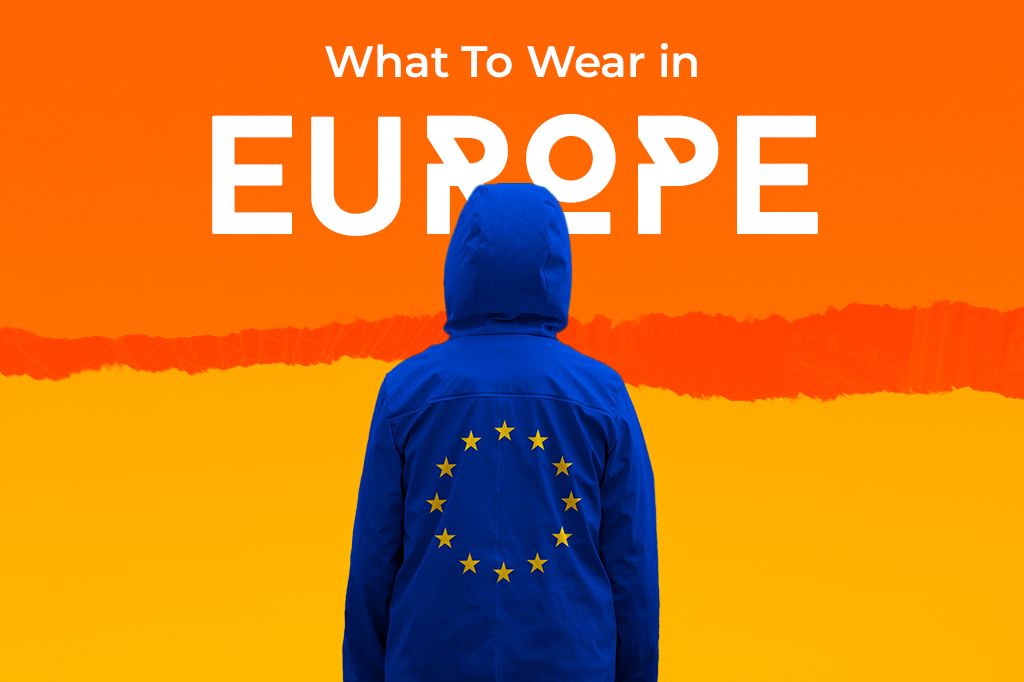
Picture by Daniele Franchi on Unsplash
And while you’re getting your gear in order, don’t forget your connectivity. Use a free eSIM from Yoho Mobile.
to stay connected without dealing with the flimsy physical SIM cards. No SIM card, no contracts—just a quick setup and you’re online in minutes. If you want to get your eSIM plan afterwards, use the code YOHO12 at checkout for a 12% discount!
Planning Your Packing Strategy
Trip Duration. How long is your trip?
If you’re going on a short trip, 2–3 days, you can fit everything in a carry-on bag. Just pack clothes you can wear for different situations, and not too many toiletries. In general, choose neutral clothes that can work in different contexts with a bit of styling.
For longer stays, pack for two weeks and plan to do laundry. This approach means you won’t take too much and will have some variety. You might want more clothes, but you can mix and match what you pack.
Weather
Research seasonal variations and regional differences when starting your packing list for Europe. You won’t pack the same for rainy London as for warm Venice. Cold climates require warm layers, waterproof clothes, and wellies. If you’re going somewhere warm, pack clothes that you don’t mind getting sweaty, sun cream, and shoes that are nice to walk in. Rainy regions require waterproof clothing and gear like jackets, umbrellas, and quick-dry clothing.
Keep in mind that some accessories you can buy when you need them. A good umbrella can be hard to carry from your home to the airport, and you might not even need it.
Luggage
Think about your travel needs and expectations when choosing between a suitcase and a backpack. Suitcases are ideal for urban travel with easy access to belongings, while backpacks are better for rough terrain or if you’re going to more than one place.
As for the different suitcases, a carry-on suitcase avoids baggage claim delays but limits how much you can pack, so they’re better suited for shorter trips. For a longer stay a checked baggage gives you more space to fit clothes and items, but it must be retrieved at your destination.
Packing Techniques
Efficient packing techniques include rolling clothes to save space, using compression bags to reduce volume, and packing cubes to organize items. Your jackets or sweaters will fit better in the compression cubes and will not wrinkle. Even if you leave enough space in your suitcase now, having this system can help you fit all the souvenirs that you get on the return trip.
Laundry Options
For extended trips, plan to wash clothes on the road. You can use laundromats if you feel comfortable with the local language and like to feel like a native, or hotel services if you prefer comfort. Portable laundry kits are another option, and can be useful for handwashing smaller items like socks or undergarments, or delicate clothes.

Photo by Sarah Brown on Unsplash
Clothing: The Art of Versatile Packing
Packing Light vs. Bringing Extra for Comfort
A lightweight suitcase is easier to carry and will make you feel more comfortable during your trip. While checking your packing list for Europe, focus on the essentials and make multifunctional items a priority.
For example, get a dress that can go from casual to formal if you add pantyhose and heels, or pants that you can wear while hiking and walking around town. After that, just add some extras, like layers and more underwear.
Destination, Season, and Activities
When picking clothes for your trip, consider the destination, season, and activities you’ll be doing. If you’re going to Switzerland for 10 Days, pack clothes that can be worn in layers and waterproof outerwear. But traveling to warmer countries like Italy or Greece requires breathable fabrics and sun protection that make you feel cool.
Depending on the activities you plan to do, you’ll have to pack more clothes. If you go hiking, you need resistant clothes and sturdy shoes, while for the beach, you’ll need a few swimsuits and a sarong. If you want to go to the Vatican City, you’ll need more modest clothing that covers you up.
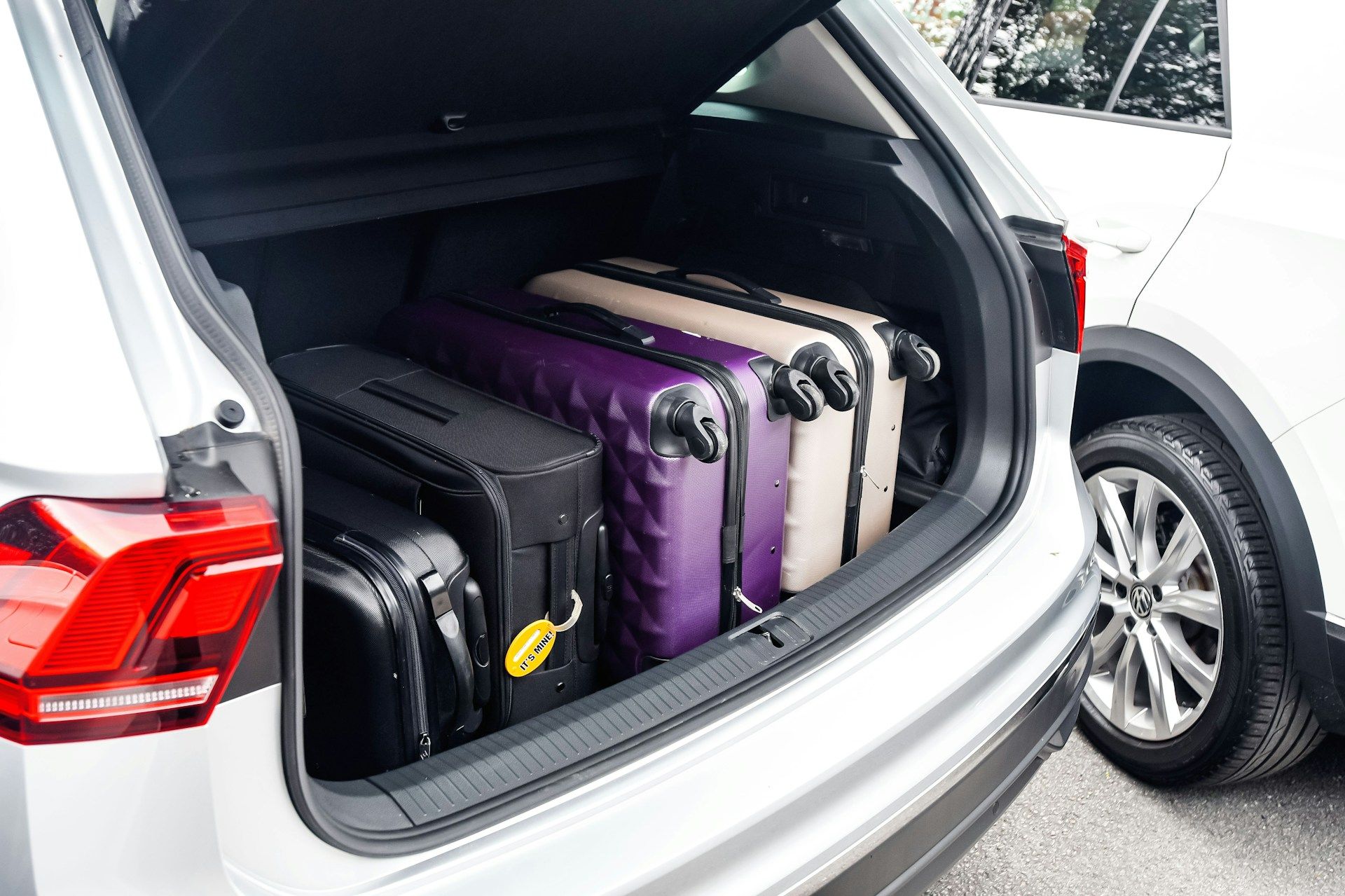
Photo by Swansway Motor Group on Unsplash
Basic Wardrobe Essentials
When it comes to packing clothes for Europe, versatility is of the essence. Let’s start with the basics, then we’ll look at how to mix and match them for maximum outfit options with minimal bulk.
-
Neutral colors: Colors like black, navy blue, olive green, gray, and beige are not only timeless, but also incredibly useful when packing for Europe. In most European countries, people have a certain effortless elegance, and these colors will help you blend in. They go well with many other colors and are suitable for multiple situations.
-
Layering: Unless you’re going to Finland in the middle of the winter, you don’t need to bring your bulkiest coat. Focus more on constructing outfits with layers, that way you can adjust them better to the weather in each region. Bring sweaters, cardigans, and light jackets, for example, but also hats, scarves, and gloves. Thermal layers are also a great addition, as they are pretty lightweight but will make you feel warm and cozy.
Footwear
Shoes are usually one of the bulkiest items you’ll be adding to your suitcase on your trip to Europe. But they are necessary. Experienced travelers always advise traveling with your bulkiest pair on your feet; this could be your comfortable sneakers for walking, or your hiking boots, for example. Others will recite the rule of three and say that you only need three pairs.
How does the three-pair rule look for a European trip?
-
Casual Walking Shoes: Wear your favorite sneakers for walking and exploring cities or for casual outings. You’ll be comfortable and light on your feet as you go about your day. Moccasins or tennis shoes are also stylish, comfortable, and easy to slip on and off.
-
Weather-Specific Footwear: In wet or cold climates, waterproof boots protect your feet from rain and snow and keep you warm and cozy. In hot climates, sandals will be your salvation, providing breathability and comfort for long walks or time at the beach or pool.
-
Special Occasion Footwear: If you have a formal event, business meeting, or dinner party planned during your trip, consider bringing dress shoes or heels. They complement both casual and formal outfits and are practical and stylish.
Accessories
Believe it or not, travel accessories can make all the difference in your safety and comfort. Here are a few items that should be on your packing list for Europe:
-
Cross-body bag: A cross-body bag is more efficient than a backpack because it keeps your belongings secure and in front of you, reducing the risk of theft.
-
City Guides and Offline Maps: Carry city guides and offline maps to help you navigate unfamiliar areas without relying on an Internet connection, especially in places with limited Wi-Fi or if you plan to explore remote locations.
-
Scarf: A scarf is a must in your suitcase. It can act as a blanket to protect you from the cold on long trips, but you can also use it to drape over your shoulders in religious places, as a makeshift pillow, or to tuck your hair in.
-
Laundry bags: Separate dirty clothes from clean clothes by using laundry bags. This will help you avoid mixing them and maintain organization and hygiene throughout your trip. This is especially important if you are staying for a long time or if laundry facilities are limited.
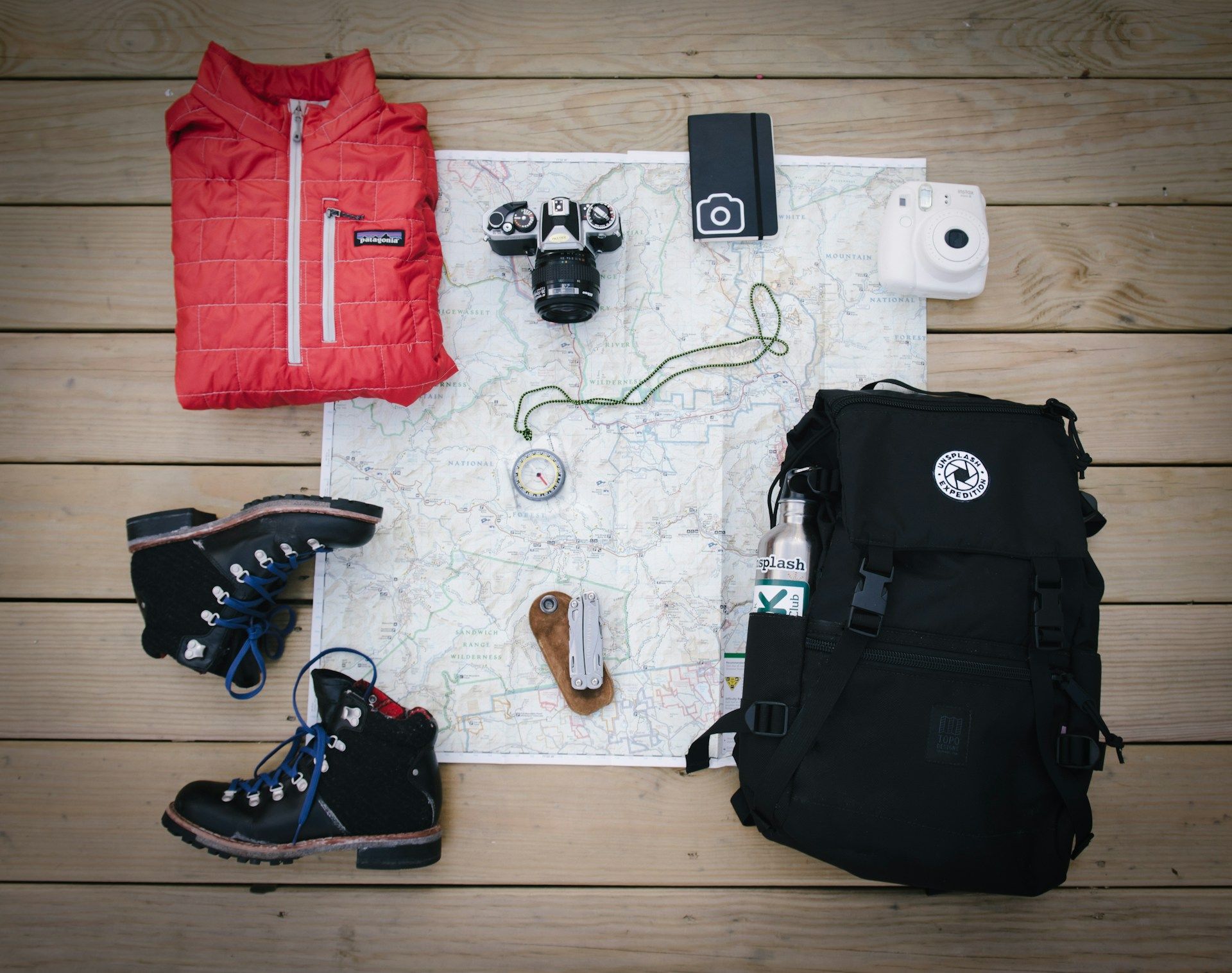
Photo by Alice Donovan
Rouse on Unsplash
Travel Essentials
Documents and money management are as important as clothing when traveling internationally. Pay attention to some of the key documents you should take with you wherever you go:
-
Passport: Make sure your passport is valid for at least six months from the date of departure, because many countries require it. This way, you’ll avoid complications in case of delays or emergencies.
-
Visa: Check the visa requirements for your destination before you go. Some countries require a visa for entry, and others allow visa-free travel for specific periods.
-
ETIAS: Starting in 2026, if you are traveling to the European Union, you must first apply for the European Travel Information and Authorization System (ETIAS). This electronic authorization is required if you do not have a visa for the Schengen countries and costs 7 euros.
-
Travel insurance: In case of medical emergencies, trip cancellations, or loss of luggage, travel insurance provides financial protection against these events.
-
Credit Cards + Backup Cash: Have at least one international credit card, and make sure it is activated for transactions in other countries. But, to be prepared for any eventuality, keep some cash. In rural areas, cards are not widely accepted as in the cities.
-
Digital & Printed Copies of Important Documents: Make digital copies of your passport, visa, travel insurance, and tickets, and secure them online or on a device. This will make it easier to show them if you lose them or someone steals them.

Photo by CardMapr.nl on Unsplash
Electronics and Accessories
This might not be the first necessity, but it can contribute to a smooth and far more comfortable travel.
-
Phone and battery case: Don’t forget your smartphone with a battery case so you can use the maps, communicate, and take all the photos you want. A portable charger will also come in handy if you run out of battery in the middle of the road.
-
Universal travel adapters: Carry a universal adapter for the different types of plugs in Europe. If your device is dual-voltage, an adapter will suffice, but consider a voltage converter for non-dual-voltage electronics.
-
Kindle or e-reader: You will find it more convenient to carry an e-reader than a physical book. It saves space in your bag. This is essential in longer trips, where you may need more than one book.
-
Laptop or tablet: If you’re working on the go, carrying your laptop is essential; otherwise, you might skip this.
-
Noise-canceling headphones: Use noise-canceling headphones to isolate yourself from outside noise. This allows you to sleep, read, or focus on other activities during the long plane and train rides.
-
Portable fans for hot climates: Keep cool when your destination is hot with a portable fan. They’re lightweight, rechargeable, and can be carried in your hand, clipped on, or placed on a surface.
-
AirTags or Luggage Tracking Devices: Track the location of your luggage with Apple AirTags and similar devices. You can use apps like Find My to track your luggage and locate it in real time.
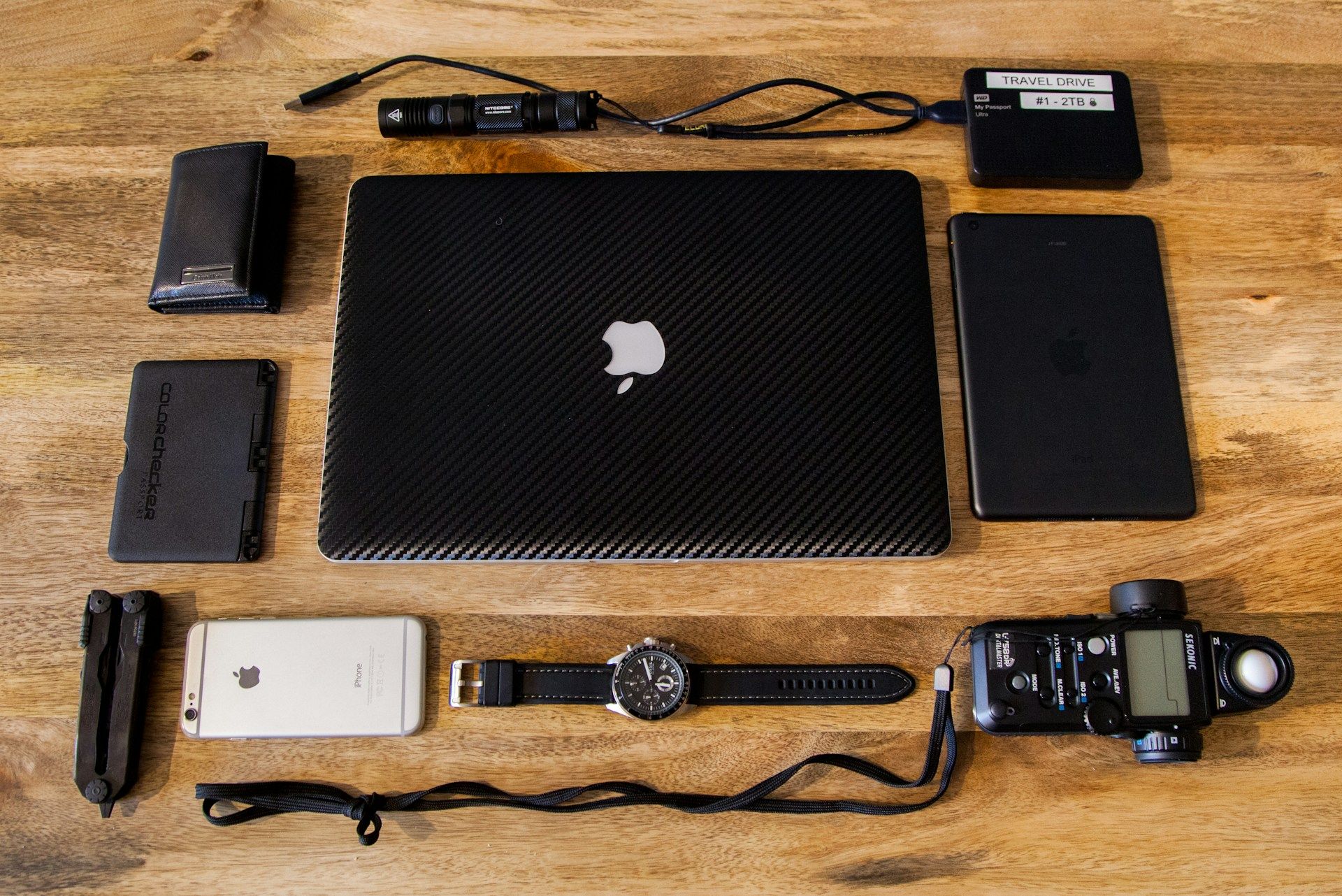
Photo by James Lewis on Unsplash
Toiletries and Personal Care
-
For your oral care pack, what do you use regularly, so your toothbrush, a travel-size toothpaste, and dental floss?
-
To style your hair, you know better than any list what to pack, but stick to the basics. You can put your favorite shampoo and conditioner in a travel-size container to save some space and money, or use dry shampoo for the long travel days.
-
The hotels usually give some soap or body wash, but it’s better to bring your own. And solid bars of soap do save space, and you don’t risk spills in your luggage.
-
If it’s a longer trip, you should pack your razor, nail clippers, tweezers, and if you need them, menstrual products.
Skincare Must-Haves
-
Include water-activated facial wipes in your hand luggage for easy cleanup during the trips and the day-to-day.
-
Bring your favorite moisturizing face masks to make the most of in-flight time by hydrating your skin.
-
Pack at least one SPF 30, since you’ll spend a lot of time outdoors. A lip balm with SPF is also a great addition to your handbag.
First Aid & Essentials
-
A small first aid kit is essential in any kind of travel, even if you are packing for a vacation to Europe. Add small and useful items like adhesive bandages of different sizes, antiseptic wipes, blister plasters, and antibacterial ointment.
-
For medications, keep common ones you might need, like pain relievers, antihistamines, anti-diarrheal, and antacids. If you’re prone to motion sickness, bring something for that.
-
If you’re taking any prescription medication, bring enough for any emergency delay, always in the original packaging, and carry a copy of the prescription.
Packing Tips for Different Travel Styles
Backpackers
-
Keep your pack as light as possible with multipurpose clothing such as quick-drying shirts and convertible pants.
-
Use buckets and bags to organize your belongings, and always carry a small first-aid kit.
Business travelers
-
Bring professional attire that’s travel-friendly, such as wrinkle-resistant suits or blazers and neutral shirts that are easy to mix and match.
-
Include work accessories such as a laptop, chargers, portable Wi-Fi, and business cards.
-
Add some comfortable clothes and shoes so you can relax on your time off and explore the city more comfortably.
Family Travel
-
If traveling with small children, bring essentials such as diapers, wipes, snacks, and a couple of extra changes of clothes.
-
Bring entertainment such as toys, books, or tablets to keep them occupied during the trip, but be patient if they get fussy.
Luxury travelers
-
Bring clothes suitable for upscale dinners or events, such as formal dresses or tailored suits.
-
Wear clothes that can be mixed and matched with other outfits and include jewelry or scarves to add a touch more of refinement to any outfit.
-
Make sure your shoes are appropriate for your planned activities. Colors like black and beige are more elegant and go with almost every outfit.
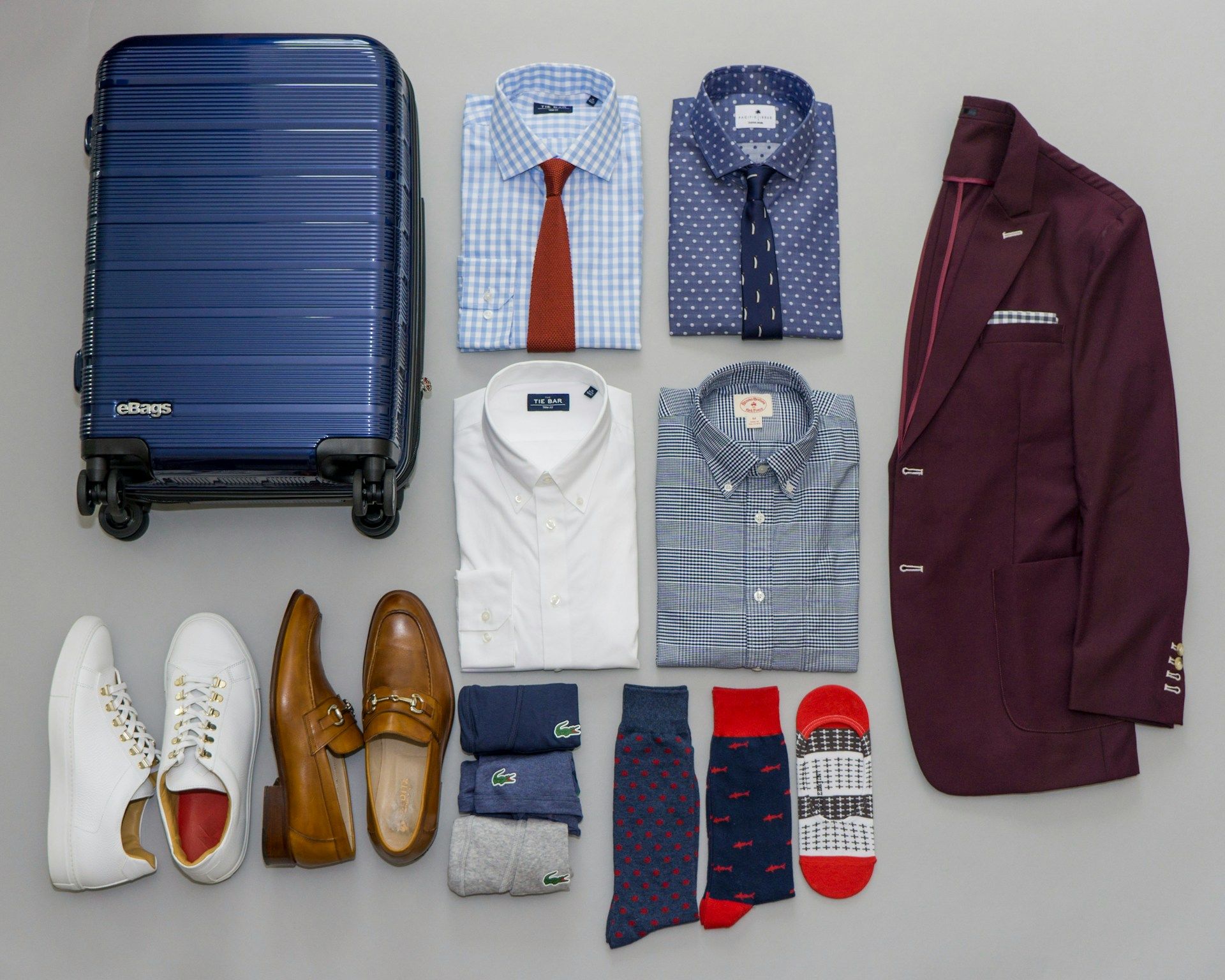
Photo by Benjamin R. on Unsplash
Final Thoughts: Ready to Explore Europe?
After checking out this packing list for Europe, you’ll be ready to explore any city in style, comfort, and without stress. And you’ll be sure to carry the essentials and won’t forget anything. Now, the next step is to book your flight. What are you waiting for?
But first, remember to choose a Yoho Mobile eSIM to stay connected wherever you visit in Europe. They’re easy to get, and you won’t have to worry about exchanging physical cards.
